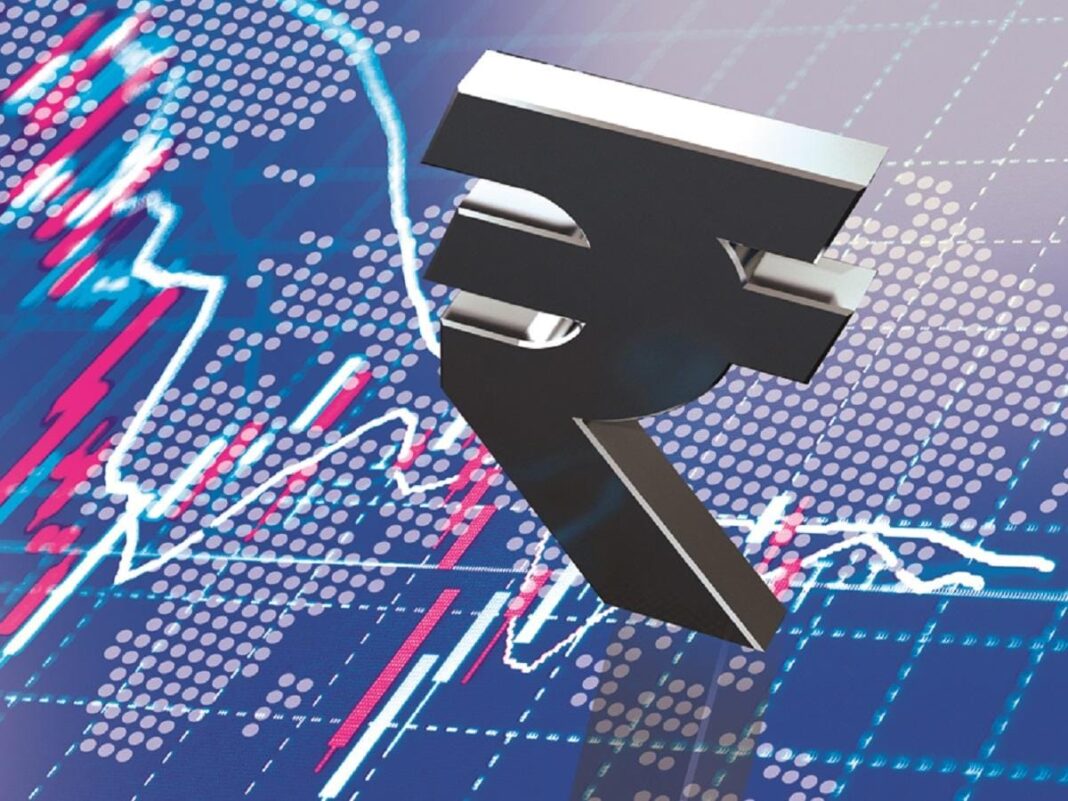The rupee weakened against the dollar on the first trading day of the new financial year after crude oil prices jumped following a surprise production cut by Opec+ — a grouping comprising major petroleum producers, including Saudi Arabia and Russia.
The Indian unit opened weaker at 82.47 versus the dollar, against the previous close of 82.18; it recovered later as the dollar index declined. The rupee closed the day at 82.33 to a dollar, 15 paisa lower than the previous close.
“The Indian currency was under pressure due to surging oil prices but recovered subsequently as the dollar index fell from a high of 102.90 to 102.45,” said Anil Kumar Bhansali, head of treasury, Finrex Treasury Advisors.
Brent crude prices rose over 5 per cent after Opec+’s announcement of cutting the production target by 1.16 million barrels per day (bpd). India, which imports over 80 per cent of its crude oil requirements, may see inflationary pressure if global oil prices remain elevated.
“Overall within a range of $70-$90/barrel, India will be comfortable with rising prices of oil; still, beyond $80 possibly we may see the rupee weakening. Overall, we don’t see too much weakness in the rupee as the dollar falls against other currencies and the Indian government makes efforts to deal in currencies other than the dollar. A broad range of 80-83 and a narrow range of 81.25-82.75 can be kept in mind for the next three months,” Bhansali said.
The Indian currency depreciated around 8 per cent in the financial year 2022-23, following sharp interest rate hikes by the United States and geopolitical uncertainties in the aftermath of the Russia-Ukraine conflict. The rupee strengthened against the dollar, albeit marginally, in the first three months of 2023.
The US Federal Reserve is at the end of its rate hike cycle — a factor that is seen as a support for the Indian currency in the current financial year.
According to a UBS India report, the rupee is likely to strengthen as the current account gap is expected to narrow in FY24.
“We estimate India’s FY24 current account deficit (CAD) to narrow to 1.5 per cent of GDP (from 2 per cent in FY23E), building in a lower trade deficit. Our estimates assume an oil price average of $80/barrel in FY24 (versus $95/barrel last year),” said Tanvee Gupta Jain, UBS India Economist.
“We estimate USD/INR to strengthen towards 79 by end-FY24. Looking at the INR on a real effective exchange rate (REER) basis and using the Harrod Balassa-Samuelson (HBS) hypothesis to adjust for the productivity differential with trading partners, our model indicates the INR is trading past its equilibrium value,” said Gupta, adding that the RBI’s 40-currency trade-weighted REER has fallen from 97th percentile over 10 years (in November 2021) to the 26th percentile currently.
The rupee’s gain could be capped as the central bank is expected to shore up its foreign exchange reserves.




